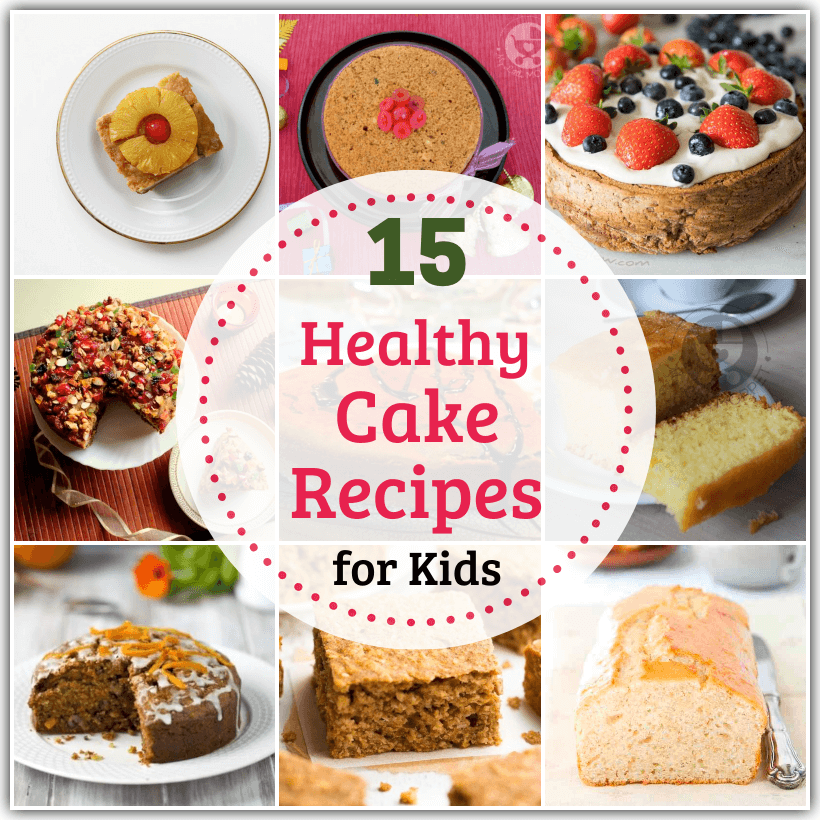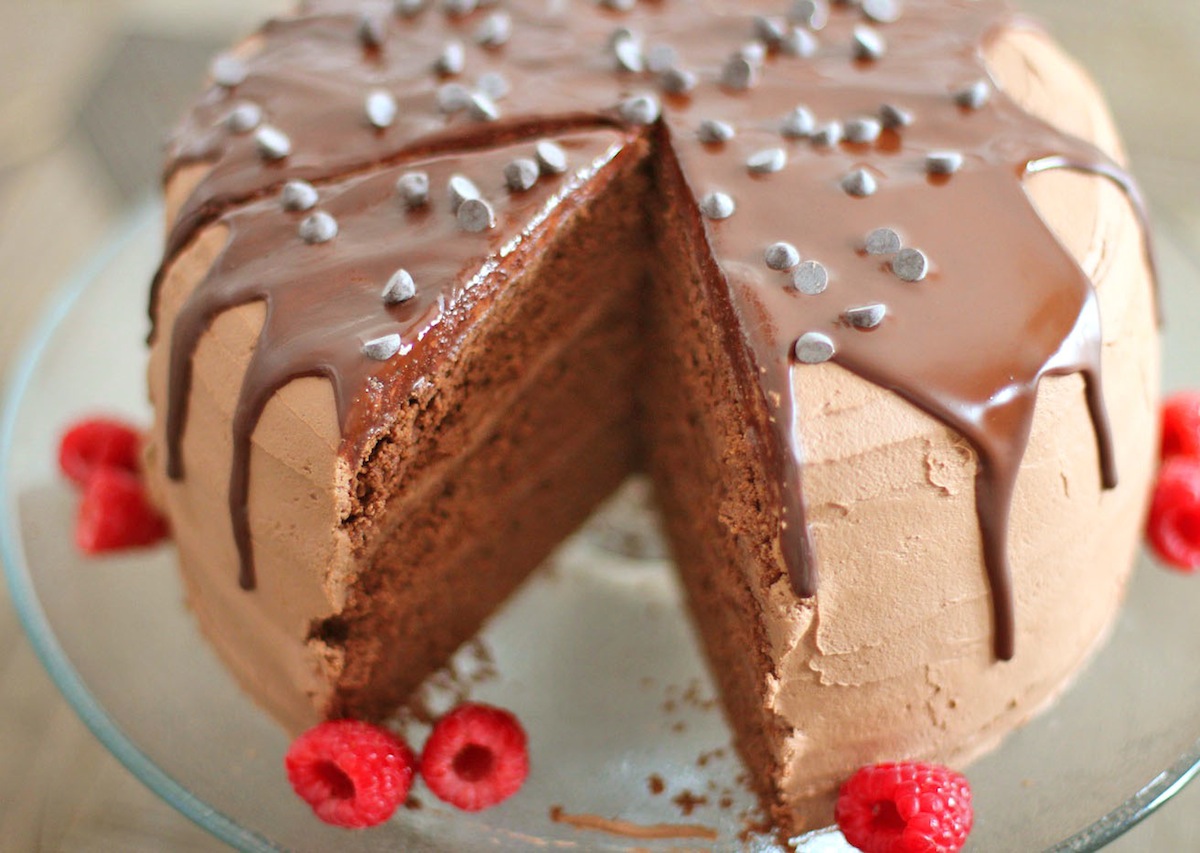Embark on a culinary adventure where taste and well-being harmoniously coexist. Healthy cake recipes redefine the notion of indulgence, offering a delightful symphony of flavors without compromising nutritional integrity. Let’s explore the art of creating delectable cakes that nourish your body and soul, transforming your sweet cravings into guilt-free pleasures.
In this comprehensive guide, we’ll delve into the secrets of crafting healthy cakes that are not only delicious but also packed with wholesome ingredients. Discover the benefits of alternative flours, natural sweeteners, and healthier substitutes for traditional cake components. We’ll unveil the techniques that ensure moist and fluffy textures, explore the nuances of flavor balancing, and provide tips for visually appealing presentations.
Healthy Cake Ingredients
Indulge in the delectable world of healthy cakes without compromising on taste or nutrition. Let’s explore the myriad of wholesome ingredients that transform ordinary cakes into guilt-free treats.
Whole Wheat Flour, Oat Flour, and Almond Flour
Swap refined white flour with whole wheat flour, oat flour, or almond flour for a fiber-rich foundation. These nutrient-dense flours provide sustained energy, promote satiety, and regulate blood sugar levels.
Natural Sweeteners
Ditch refined sugar in favor of natural sweeteners like honey, maple syrup, or coconut sugar. These unprocessed sweeteners offer a lower glycemic index, providing a gradual release of energy without the blood sugar spikes associated with refined sugar.
Greek Yogurt, Applesauce, and Mashed Banana
Substitute butter or oil with Greek yogurt, applesauce, or mashed banana for a moist and tender texture. These ingredients not only reduce fat content but also add protein, fiber, and essential vitamins to the cake.
Healthy Mix-Ins
Incorporate a variety of healthy mix-ins to boost the nutritional value of your cakes. Fruits like berries, apples, and bananas provide antioxidants and vitamins. Vegetables like carrots, zucchini, and sweet potatoes add moisture and nutrients. Nuts and seeds contribute healthy fats, protein, and fiber.
Baking Techniques for Healthy Cakes

Achieving a moist and fluffy texture in healthy cakes requires careful attention to baking techniques. Using the right ingredients is only half the battle; proper baking techniques ensure that the cake rises properly, has a tender crumb, and retains its moisture without compromising on healthiness.
Leavening Agents
Leavening agents, such as baking powder or baking soda, play a crucial role in creating a light and airy cake. These agents react with acids in the batter to produce carbon dioxide gas, which creates bubbles that expand during baking, causing the cake to rise.
The amount and type of leavening agent used will depend on the recipe and the desired texture.
Oven Temperature and Baking Time
The oven temperature and baking time are critical factors that affect the final outcome of the cake. Baking at the correct temperature ensures that the cake cooks evenly without burning or drying out. The baking time should be just enough for the cake to set and reach an internal temperature of 200°F (93°C) for a fully baked cake.
Over-baking can result in a dry and dense cake.
Preventing Dryness and Density
To prevent cakes from becoming dry or dense, it is important to use the right amount of liquid and avoid over-mixing the batter. Over-mixing can develop the gluten in the flour, resulting in a tough and chewy texture. Additionally, using too little liquid can lead to a dry and crumbly cake.
Healthy Cake Variations
Creating variations of healthy cakes is crucial to cater to diverse dietary preferences and restrictions. Adapting healthy cakes to be gluten-free, dairy-free, vegan, or low-carb allows individuals with specific dietary needs to enjoy delicious and nutritious cakes without compromising their health goals.
Gluten-Free Healthy Cakes
For individuals with gluten intolerance or celiac disease, creating gluten-free healthy cakes is essential. This involves using gluten-free flours such as almond flour, coconut flour, or oat flour instead of wheat flour. Additionally, ensuring that other ingredients like baking powder, baking soda, and thickeners are also gluten-free is crucial.
Dairy-Free Healthy Cakes
For those with lactose intolerance or a dairy allergy, creating dairy-free healthy cakes is necessary. This involves using dairy-free alternatives such as almond milk, coconut milk, or soy milk instead of cow’s milk. Additionally, replacing butter with vegan butter or coconut oil and cream cheese with vegan cream cheese or tofu is essential.
Vegan Healthy Cakes
For vegans who avoid all animal-derived products, creating vegan healthy cakes is crucial. This involves using plant-based ingredients such as flax eggs, chia eggs, or mashed bananas as egg replacements. Additionally, using vegan butter or coconut oil instead of butter and plant-based milk instead of cow’s milk is necessary.
Low-Carb Healthy Cakes
For individuals on low-carb diets, creating low-carb healthy cakes is essential. This involves using low-carb flours such as almond flour or coconut flour and natural sweeteners such as stevia or monk fruit instead of refined sugar. Additionally, reducing the amount of fruit and other high-carb ingredients is important.
Allergy-Friendly Healthy Cakes
Creating healthy cakes that are also allergy-friendly presents unique challenges. Identifying the specific allergens and finding suitable substitutes is crucial. For example, for nut allergies, using sunflower seed flour or quinoa flour instead of almond flour or coconut flour is necessary.
For soy allergies, using oat milk or rice milk instead of soy milk is essential.
Examples of Healthy Cake Variations
Here are some examples of healthy cake variations that cater to specific dietary needs:
- Gluten-Free Carrot Cake: Made with almond flour, coconut flour, and grated carrots, this cake is a delicious and nutritious alternative to traditional carrot cake.
- Dairy-Free Chocolate Cake: Using almond milk, coconut milk, and vegan butter, this cake offers a rich and decadent chocolate flavor without any dairy.
- Vegan Vanilla Cake: Made with flax eggs, mashed bananas, and plant-based milk, this cake is a light and fluffy vegan treat.
- Low-Carb Lemon Cake: Using almond flour, coconut flour, and stevia, this cake is a refreshing and low-carb option for those on a restricted diet.
- Allergy-Friendly Funfetti Cake: Made with gluten-free flour, dairy-free milk, and egg replacements, this cake is a colorful and allergy-friendly treat for everyone to enjoy.
Presentation and Serving Suggestions
The presentation of healthy cakes is crucial in enhancing their appeal and encouraging mindful eating. By utilizing creative garnishes, decorations, and plating techniques, you can transform your healthy creations into visually stunning treats that tantalize the senses.
Garnishes and Decorations
Garnishes and decorations add a touch of elegance and sophistication to healthy cakes. Fresh fruits, berries, and herbs can provide vibrant colors and textures, while edible flowers lend a delicate and aromatic touch. Chocolate shavings, nuts, and seeds add a touch of crunch and visual interest.
Consider the flavors and textures of your cake when selecting garnishes to create a harmonious balance.
Plating Techniques
Plating techniques play a significant role in showcasing the beauty of your healthy cakes. Use a variety of plate shapes and sizes to create different presentations. Consider using cake stands or risers to elevate your cakes and create a focal point.
Experiment with layering and stacking techniques to add height and dimension to your creations.
Appropriate Serving Sizes
Mindful eating and portion control are essential when enjoying healthy cakes. Cut cakes into appropriate serving sizes to prevent overconsumption. Use a sharp knife to ensure clean cuts and avoid crumbling. Consider serving cakes with fruit or yogurt to promote a balanced and satisfying meal.
Storage and Preservation
To maintain the freshness and flavor of your healthy cakes, proper storage is key. Store cakes in an airtight container at room temperature for up to 2 days. For longer storage, refrigerate cakes for up to 5 days or freeze for up to 2 months.
Thaw frozen cakes overnight in the refrigerator before serving.
Final Conclusion

Healthy cake recipes are a testament to the fact that culinary enjoyment and well-being can coexist. By embracing healthier ingredients, mindful baking techniques, and creative flavor combinations, you can transform your cakes into nutritious treats that satisfy your cravings without compromising your health goals.
Experiment with different variations, explore new flavor profiles, and discover the joy of creating delicious and guilt-free cakes that will delight your taste buds and nourish your body.
Questions and Answers
Q: What are some common healthy flour alternatives for cakes?
A: Whole wheat flour, oat flour, and almond flour are excellent alternatives to refined white flour. They provide a boost of fiber, essential nutrients, and a wholesome flavor profile.
Q: How can I reduce the sugar content in my cakes without compromising on taste?
A: Natural sweeteners like honey, maple syrup, or coconut sugar offer a healthier alternative to refined sugar. They impart a unique flavor profile and contain beneficial nutrients.
Q: What are some healthy mix-ins that can enhance the nutritional value of cakes?
A: Incorporate fruits, vegetables, nuts, and seeds into your cakes to boost their nutritional content. These mix-ins add texture, flavor, and essential vitamins, minerals, and antioxidants.
Q: How can I prevent my healthy cakes from becoming dry or dense?
A: Ensure the right balance of wet and dry ingredients, avoid over-mixing the batter, and use the appropriate baking temperature and time. These factors contribute to a moist and fluffy texture.
Q: What are some tips for decorating healthy cakes in a visually appealing manner?
A: Use fresh fruits, edible flowers, or nuts as garnishes to add color and texture. Experiment with different frosting or glaze recipes to complement the cake’s flavor. Consider creative plating techniques to elevate the presentation.
